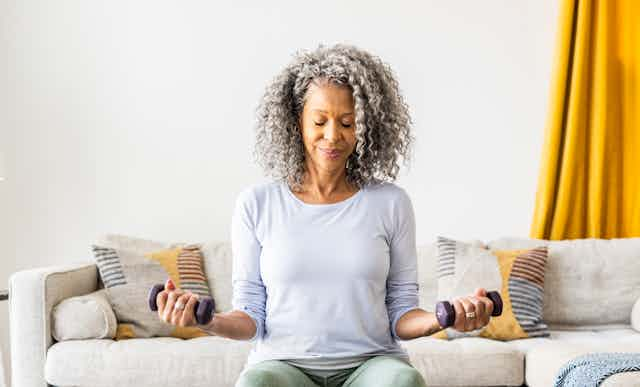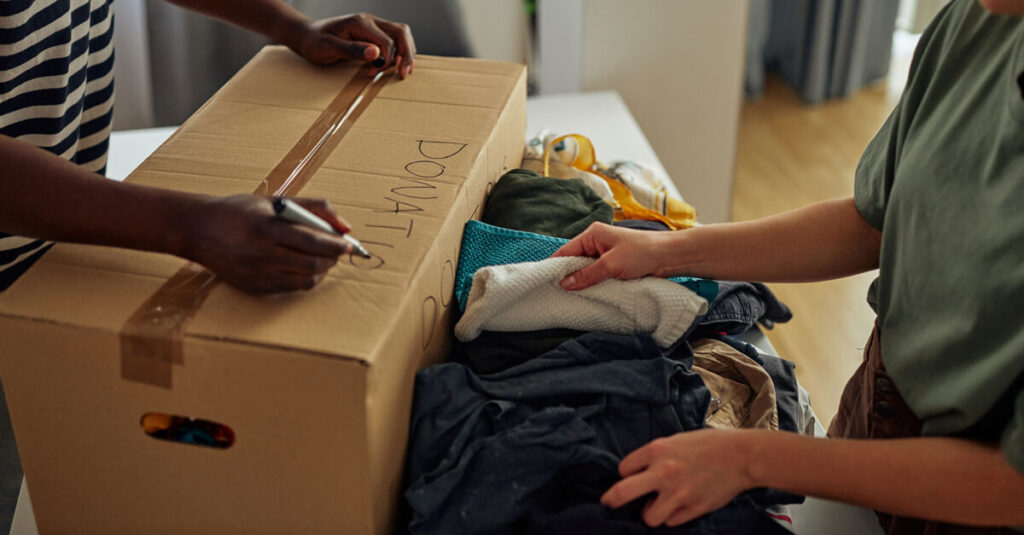Osteoporosis Can Shorten Your Life – Here’s How To Keep Bones Healthy

Lifestyle Because there are typically no symptoms until the first fracture occurs, osteoporosis is considered a silent disease. Some call it a silent killer.
Osteoporosis is a bone disease characterized by decreased bone density and strength, leading to fragile, brittle bones that increase the risk of fractures, especially in the spine, hips, and wrists.
The National Osteoporosis Foundation estimates that more than 10 million Americans have osteoporosis. Another 43 million have low bone mass, which is the precursor to osteoporosis. By 2030, the number of adults with osteoporosis or low bone mass is estimated to increase by more than 30% to 71 million.
The reasons for the increase include lifestyle issues, particularly smoking, lack of physical activity, and alcohol abuse. Our aging population, along with the insufficient attention paid to this disease, is also why osteoporosis is on the rise.
(Credit: BSIP/Universal Images Group via Getty Images)An illustration of osteoporosis of the spine. Note the sponge-like tissue, which is partially destroyed.
If you are older, it may be discouraging to read those statistics. But as orthopedic specialistswho have studied this disease, we know that osteoporosis is not inevitable. The key to having healthy bones for a lifetime is to take some simple preventive measures – and the earlier, the better.
Although the symptoms are not obvious early on, certain signs will indicate your bones are becoming weaker. The most serious complications of osteoporosis are fractureswhich can lead to chronic pain, hospitalization, disability, depression, reduced quality of life, and increased mortality. Worldwide, osteoporosis causes nearly 9 million fractures annually. That’s one osteoporotic fracture every three seconds.
Lifestyle Height Loss, Back Pain
Minor bumps or falls may lead to fractures, especially in the hip, wrist, or spine. These types of fractures are often the first sign of the disease.
If you notice that you’re getting shorter, the cause could be compression fractures in the spine; this, too, is a common symptom of osteoporosis.
Although it’s typical for most people to lose height as they age – about 1 to 1½ inches (2.5 to 3.8 centimeters) over a lifetime – those with osteoporosis who have multiple spinal fractures could lose 2 to 3 inches or more in a relatively rapid time frame.
Curved posture, or noticeable changes in posture, may lead to a hunched back, which could be a sign that your spine is weakening and losing density.
Persistent back pain is another indicator – this, too, is the result of tiny fractures or compression of the spine.
A healthy diet and exercise are two ways to build up bone density.
Lifestyle Calcium and vitamin D
Osteoporosis cannot be completely cured, but certain lifestyle and dietary factors can lower your risk.
Calcium and vitamin D are essential for bone health. Calcium helps maintain strong bones, while vitamin D assists in calcium absorption. Women over age 50 and men over 70 should consume at least 1,200 milligrams of calcium daily from food and, if necessary, supplements.
The easy way to get calcium is through dairy products. Milk, yogurt, and cheese are among the richest sources. One cup of milk provides about 300 milligrams of calcium, one-fourth of the daily requirement. If you are vegan, calcium is in many plant-based foodsincluding soy, beans, peas, lentils, oranges, almonds, and dark leafy greens.
Adults should aim for two to three servings of calcium-rich foods daily. Consuming them throughout the day with meals helps improve absorption.
Vitamin D is obtained mostly from supplements and sunlight, which is the easiest way to get the recommended dose. Your body will produce enough vitamin D if you expose your arms, legs, and face to direct sunlight for 10 to 30 minutes between 10 a.m. and 3 p.m., two to three times a week.
Although it’s best to wear short-sleeve shirts and shorts during this brief period, it’s okay to wear sunglasses and apply sunscreen to your face. Sunlight through a window won’t have the same effect– glass reduces absorption of the UV rays needed for vitamin D production. People with darker skin or those living in less sunny regions may need more sunlight to get the same effect.
If a doctor has given you a diagnosis of osteoporosis, it’s possible the calcium and vitamin D that you’re getting through food and sun exposure alone is not enough; you should ask your doctor if you need medication.
Chickpeas, sesame seeds, and dark green vegetables, such as kale, arugula, and broccoli, are good sources of calcium.
Lifestyle Dance, Jog, Lift Weights and Avoid Alcohol
Regular exercise is an excellent activity that can help stave off osteoporosis. Weight-bearing exercises, such as brisk walking, jogging, and dancing, are great for increasing bone density. Strength training, such as lifting weightshelps with stability and flexibility, which reduces the risk of falling.
Aim for 30 minutes of weight-bearing exercise at least four days a week, combined with muscle-strengthening exercises at least twice a week.
Particularly for women who lose bone density during and after menopauseregular exercise is critical. Working out prior to menopause will reduce the risk of osteoporosis in your later years.
And avoid harmful habits – smoking and heavy alcohol consumption can weaken bone density and increase the risk of fractures.
Fall prevention strategies and balance training are crucial and can help reduce the risk of fractures.
Lifestyle Screening and Treatment
Women should start osteoporosis screening at age 65, according to the U.S. Preventive Services Task Force. Men should consider screening if they have risk factors for osteoporosiswhich include smoking, alcohol use disorder, some chronic diseases such as diabetes, and age. Men over 70 are at higher risk.
Medical imaging, such as a bone density scan and spinal X-rays, can help confirm osteoporosis and detect compression fractures. These basic tests, combined with age and medical history, are enough to make a clear diagnosis.
Managing osteoporosis is a long-term process that requires ongoing commitment to lifestyle changes. Recognizing the early warning signs and making these proactive lifestyle changes is the first step to prevent the disease and keep your bones healthy.
Ting Zhang is a Research Scholar of Orthopedics at the University of Pittsburgh. Jianying Zhang is a Research Professor of Orthopaedic Surgery at the University of Pittsburgh. This article is republished from The Conversation under a Creative Commons license. Read the original article.
Discover more from Tamfis Nigeria Lmited
Subscribe to get the latest posts sent to your email.



 Hot Deals
Hot Deals Shopfinish
Shopfinish Shop
Shop Appliances
Appliances Babies & Kids
Babies & Kids Best Selling
Best Selling Books
Books Consumer Electronics
Consumer Electronics Furniture
Furniture Home & Kitchen
Home & Kitchen Jewelry
Jewelry Luxury & Beauty
Luxury & Beauty Shoes
Shoes Training & Certifications
Training & Certifications Wears & Clothings
Wears & Clothings
















